




| Evening Grosbeak (Hesperiphona vespertina (W. Cooper, 1825)) |





|
|
Scientific name: Hesperiphona vespertina (W. Cooper, 1825) Common name: Evening Grosbeak Other names: Old scientific name: Coccothraustes vespertinus. French name: Gros-bec errant Order: Passeriformes Family: Fringillidae Size: Body size: 18.5 to 20 cm; Weight: 53 to 74 g; Wingspan: 30 to 36 cm. Habitat: Coniferous forests but also mixed forests, semi-open areas in winter. Food: Small fruits, seeds and sap, but also larvae and insects. Nesting: The nest is a cup of twigs lined with moss, grasses and other fibres. It is located between 6 and 12 meters high in a coniferous or deciduous tree, on a horizontal branch or in a fork. There is a clutch of 3 to 4 eggs between May and August. Migration: Partially and irregularly migratory, northern birds move to the south of the United States in varying numbers depending on the year. Geographic area: Forests of Canada, north-western United States and Rocky Mountains south to Mexico. |
The Evening Grosbeak has a large, conical, light-coloured bill. The tail is short and black. Males have a bright yellow body and forehead which contrasts with the rest of the brown head. The wings are black with a large white patch. Females are olive brown in colour with greyer underparts. The wings are black with white spots. |
| [To know more about the Evening Grosbeak] [Next picture] [Top] |
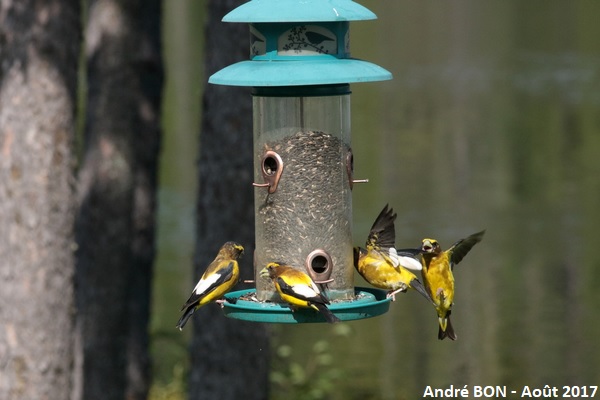
|
The surrounding dense coniferous forests are the Evening Grosbeaks' main habitat, so it's no surprise to see them in numbers at the feeder. |
| [To know more about the Evening Grosbeak] [Next picture] [Previous picture] [Top] |
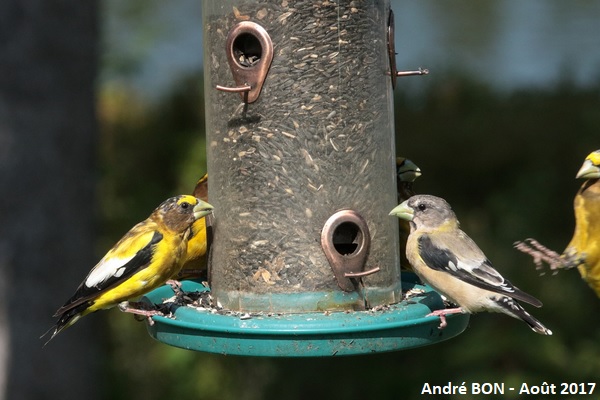
|
Here is a picture that clearly shows the sexual dimorphism with the predominantly bright yellow male and the more greyish female. |
| [To know more about the Evening Grosbeak] [Next picture] [Previous picture] [Top] |
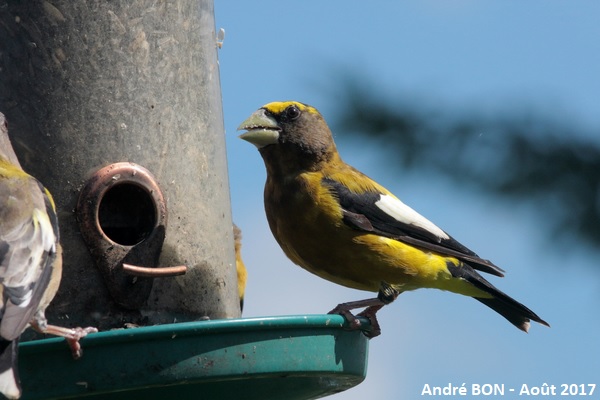
|
Close-up of a male. |
| [To know more about the Evening Grosbeak] [Next picture] [Previous picture] [Top] |
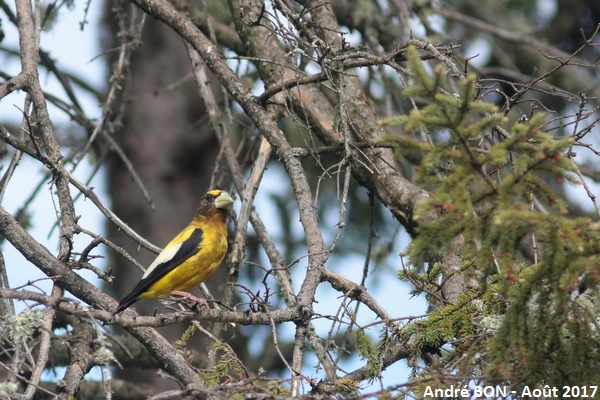
|
I tried to take some pictures away from the feeder to make it look more natural. |
| [To know more about the Evening Grosbeak] [Previous picture] [Top] |
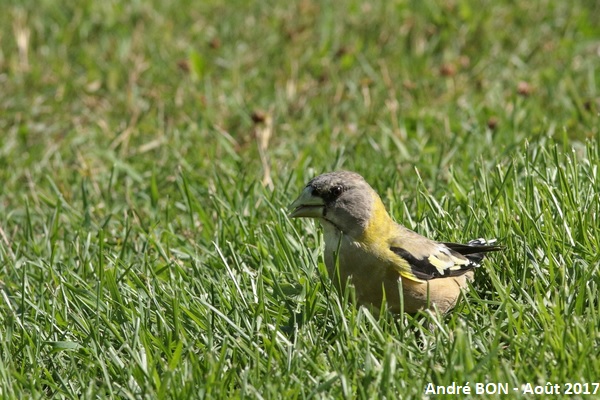
|
Close-up of a female. |